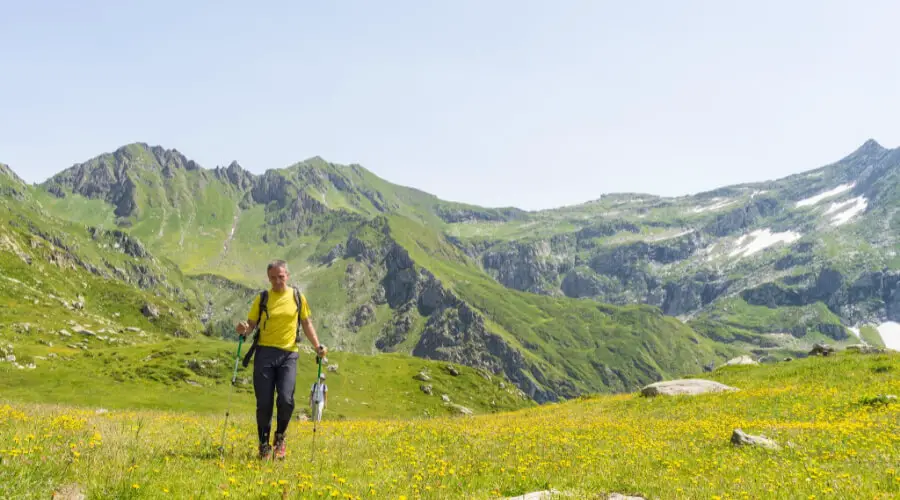Has anyone ever told you to “stop running with scissors,” and you wondered about the phrase’s meaning? Never mind, we are here to tell you the definition. The expression “running with scissors dates back to the 1950s. Its origin is the public safety film of the 1950s/1960s that targeted children. The film focused on hidden dangers and how to avoid them. In short, the expression “don’t run with scissors” is a warning to all of us to beware of dangers associated with specific actions or else we suffer the consequences.
Now that we have known the phrase’s meaning, let’s delve into its application in day-to-day life activities. Maybe you understand the dangers of a certain action and you overlook them to regret later when your actions backfire. Can’t it be wise to take a precaution instead of “running with scissors?”
Why Was The Phrase “Running With Scissors” Coined?

We all know that running with scissors or any sharp object is dangerous. You can trip and fall over the object resulting in severe injuries to your body. Alternatively, you might injure someone else if you run with a sharp object. So the phrase was coined so that we may take precautions to prevent unnecessary accidents.
Scissors were singled out in the expression since statistics indicate that they cause most eye accidents.
In this article, we will walk you through the precautions taken when hiking to prevent injuries. If you defy the precautions and injure yourself as a result, then you will blame yourself for “running with scissors.”
Don’t Run With Scissors When Hiking- Safety Precautions.

Hiking is a natural walking activity that is good for the well-being of your health. When having a nature walk, you relax your mind and focus your attention on the scenery of your hiking trails. The exercise might be challenging, but it calms your mind and reduces stress.
If you take all precautions, the hiking adventure will prove to be an enjoyable exercise. Otherwise, the nature walk might turn detrimental if you ignore safety precautions as you will be compelled to pay for your mistake or ignorance.
1. Know The Area You Are Hiking
Hiking in a new territory is an exciting adventure. Nevertheless, beware that you don’t know the area well. Ensure you familiarize yourself with the region before embarking on the experience. Your safety must come first before anything. So check out things like local wild animals and how to deal with them if they confront you, local hunting zones, poisonous plants in the hiking trails, weather patterns, and any other hiking alert that will ensure your safety.
Most of the area information is available on websites of the regional government or hiking sites.
2. Plan To Hike During The Day
Avoid unknown dangers and plan your hikes during the day. If you hike at night, you may get lost in the dark. Another danger of walking at night is the encounter of wild animals synonymous with wandering in the dark.
It will be best if you ensure that your hiking adventure ends before the sunsets. Regardless of the distance, you plan to hike, always determine the turnaround time and stick to it to avoid hiking in the dark.
3. Use Appropriate Hiking Gear.
With the right hiking gear, the adventure becomes enjoyable and effortless. Before embarking on the task, ensure you list the correct equipment you will require for the task. Some of the gears you must have are;
Hiking Pants– The best hiking pant to keep you protected from skin chafing is an ideal gear for any hiker. Go for moisture-wicking pants with better breathability and UV-resistant abilities.
Hiking Boots- Regardless of the nature and distance of your hiking trail, ensure you have the proper boots that can’t cause any damage to your feet. Good hiking boots have the following properties: They should be waterproof, stable, supportive, moisture-wicking, and breathable. Suitable hiking footwear ensures that your feet don’t develop blisters that may become a bacterial breeding ground.
Enough Drinking Water- Water is a vital component to maintain the body’s hydration state when walking. If you walk for hours without drinking sufficient water, you will dehydrate while on the trails, and the experience is not pleasant.
4. Avoid Walking Off-Trail
Hiking trails are marked to guide hikers. Whatever the case, avoid getting off-trails. The action of defying this directive and entering closed areas is a recipe for getting injured. The markers of the hiking trails did so because they understood that the path was the safest.
5. Hike With A Friend
If possible, try to hike with someone. Hiking with a companion eliminates the risk of getting stranded when faced with a dire situation. Sit down with your hike partner and agree on the hiking trail to follow and the emergency plan.
6. Carry A First Aid Kit
When hiking, you are prone to minor injuries such as ankle rolls, bug bites, and scrapes. Ensure you carry with you an equipped first aid kit to deal with such injuries. You can also customize your emergency kit with any medicine you may need if you have underlying conditions.
7. Know Your Capabilities And Limits
If you plan to go out for a hike, it will be ideal to know your physical strength and endurance level. Being aware of your capabilities gives you the confidence to take to the trails effortlessly, and the adventure becomes enjoyable.
Planning for a hike is easy when you are aware of your limits. You will examine the trail and determine whether you have the required intensity to tackle it. Avoid strenuous trails that might lead to injuries if you don’t have the endurance level to match them.
8. Plan The Route
Before embarking on your hiking adventure, plan the route and inform a family member or a friend about it. Also, tell them about the time you will be back. If anything happens and you are not home at the predetermined time, they will organize a search party that might get you out of danger.
Conclusion
This article has highlighted the safety precautions necessary when hiking. You have to decide whether you will follow them for your good or “run with scissors” and regret later.

